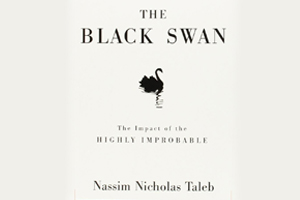Author: Sebastian Mallaby
If you have been reading about the world of investments, you would have come across the term hedge funds as a part of your research into the market and its varied investment avenues. Hedge funds, which fall under the category III of alternative investment funds, represent unregistered private investment entities that operate as partnerships, funds, or pools. These entities have the flexibility to invest and trade across various markets, employing diverse strategies and instruments and unlike traditional investment avenues such as mutual funds, they are not bound by equivalent regulatory standards. The diversity among hedge funds extends to the securities they invest in and the strategies employed for management purposes.
In More Money Than God, by Sebastian Mallaby, readers are offered a penetrating examination of hedge funds, shedding light on their influential role in global finance and everyday economic dynamics. Delving into the historical evolution of these enigmatic entities, the book uncovers their origins and modus operandi in contemporary finance. It meticulously scrutinises the intricacies of hedge fund operations, emphasising the critical juncture they face when scaling up and the inherent risks associated with their reliance on models and statistics for investment decisions. By tracing the experimental roots of hedge fund strategies to the pioneering efforts of industry seniors, it underscores the adaptive nature of these financial entities.
The author, Sebastian Mallaby, is an English journalist and author who is currently serving as the Paul A. Volcker senior fellow for international economics at the Council on Foreign Relations (CFR) and contributing as a columnist to The Washington Post. With a diverse career spanning journalism and academia, he has held roles such as contributing editor for the Financial Times and columnist/editorial board member for The Washington Post. Mallaby's extensive writings, featured in publications including The New York Times, The Wall Street Journal, and the Atlantic Monthly, explore topics ranging from the future of China's currency to the history and impact of hedge funds and the venture capital industry. His acclaimed books, such as The Man Who Knew and More Money Than God, offer compelling insights into key figures and dynamics shaping global finance.
Key Takeaways
- Hedge funds face challenges when reaching a certain size, hindering agility and market sentiment.
- Each hedge fund relies on models for investment guidance, but these can fail as funds grow or face unforeseen circumstances.
- Strategies of hedge funds evolved from experimentation by senior professionals in the industry.
- Hedge funds leverage well-known market movers like investor psychology and company news.
- They employ mixed financial investing strategies, including capitalising on overvalued stocks.
- Contrary to belief, hedge funds are less economically risky compared to banks.
Mallaby’s treatise underscores how hedge funds leverage well-known market movers, such as investor psychology and company news, while employing a mixed approach to financial investing that includes capitalising on overvalued stocks. Contrary to popular belief, the book argues that hedge funds pose less systemic risk to the economy compared to banks. Through its comprehensive analysis and engaging narrative, More Money Than God prompts readers to rethink their perceptions of hedge funds and their impact on the financial landscape.
Unlocking the secrets of early hedge fund success
Before the dawn of the 21st century, hedge funds pioneered strategies that deftly capitalised on market dynamics, particularly through short-selling and leveraging the snowball effect. These pioneering funds, often lauded as the most successful in financial history, possessed an intuitive understanding of market behaviours that set them apart from their contemporaries. Their expertise lay in knowing precisely when and how to execute trades, profiting from both struggling and thriving companies. Short-selling, a hallmark of hedge fund strategy, involved borrowing stocks at current prices, selling them, and repurchasing them at lower prices—a tactic that yielded returns amidst market downturns. Conversely, long positions were taken in robust companies with consistent earnings, held over extended periods, or traded swiftly to capitalise on investor psychology. Hedge funds leveraged the psychological tendency of investors to buy during upward momentum and sell during declines, strategically entering the market at the onset of rallies—a tactic colloquially known as the "snowball effect." These sophisticated strategies, prevalent in the pre-2000s era, underscored the early hedge funds' unparalleled ability to navigate and profit from market dynamics, laying the groundwork for their enduring legacy in the financial landscape.
Exploring the evolution of investment strategies
In the nascent stages of their rise to prominence, hedge funds adopted diverse investment approaches, reflecting the varied philosophies and objectives of their founders. Prior to attaining their current ubiquity, these funds explored strategies that ranged from fundamental analysis to bold market speculation. For instance, Tiger Management, founded by Julian H. Robertson, distinguished itself by its long-term perspective, prioritising the identification of stocks with enduring value—a departure from prevailing market trends at the time. Similarly, George Soros, through his iconic bet against the dollar in the 1980s, demonstrated a contrarian approach that yielded significant returns amidst widespread scepticism. Meanwhile, Farallon Capital Management implemented a unique accountability mechanism, holding traders responsible for losses as well as gains—a practice that fostered a culture of prudence and moderation. This era also witnessed the evolution of compensation structures, with performance bonuses incentivising risk-taking behaviour, albeit tempered by the recognition of losses as integral to prudent investment practices. Over time, however, hedge funds honed their strategies through iterative experimentation, culminating in the realisation that a blend of short-term trading and diversified portfolios yielded returns. While long positions continue to feature prominently in their investment strategies, serving as bulwarks against potential losses, hedge funds have embraced a more nuanced and balanced approach aimed at optimising returns while mitigating risk.
Navigating the pitfalls of hedge fund size and leverage
In the hedge fund ecosystem, a pivotal role is played by the size of the funds, underscoring the critical juncture at which funds risk losing efficiency and market agility due to their burgeoning scale. Through illustrative examples, we can see how, as hedge funds expand and their positions grow, the ability to swiftly manoeuvre in and out of trades diminishes, often disrupting market dynamics and exacerbating volatility. Despite the allure of amplified rewards, particularly for leveraged funds, the accompanying heightened risk precipitates the downfall of many erstwhile successful hedge funds. This cautionary tale underscores the delicate balance between scale and agility, and the perilous implications of excessive leverage in hedge fund operations.
Assessing the concerns around models and risk assessments
An imperative insight revolves around the reliance of hedge funds on meticulously crafted models and statistical analyses to inform their investment strategies. These models, painstakingly developed to account for risk, engendered a sense of confidence and trust during periods of market prosperity. However, as funds expanded and encountered unforeseen circumstances beyond the purview of their models, the efficacy of these risk assessments faltered, culminating in tragic consequences. Wealthy financiers, renowned for their investment acumen, found themselves ensnared in insolvency as factors unaccounted for by their models emerged. The interplay of size, liquidity, leverage, and flawed models obscured the judgment of even the most astute investors, ultimately precipitating their downfall. This cautionary tale underscores the imperative of maintaining a critical perspective on the limitations of quantitative models in navigating the complexities of financial markets.
Challenging the perception: Separating myth from reality
Contrary to prevailing sentiments, the narrative surrounding hedge funds as inherently risky and unworthy investments warrants closer scrutiny. Originating in the volatile investment landscape of the 1940s, hedge funds emerged as vehicles designed to exploit market volatility, profiting from both upswings and downswings. Initially devoid of regulatory oversight, they offered investors the potential for substantial gains alongside the inherent risk of total capital loss. However, contemporary concerns persist regarding the inadequacy of regulatory safeguards, leaving investors vulnerable to the pitfalls of irresponsible investing practices. The spectre of economic turmoil, epitomised by the 2008 financial crisis, looms large, underscoring the urgency for enhanced oversight and accountability within the hedge fund industry. Yet, while hedge funds remain subject to scrutiny, it is important to recognise that they are not the sole harbinger of systemic risk. The interconnectedness between banks and governments poses an equally formidable threat, amplifying the repercussions of financial instability through a domino effect. Unlike banks, hedge funds lack the safety net of government intervention in the event of insolvency, compelling heightened vigilance and accountability in managing investor assets. Thus, while the risks associated with hedge fund investments merit attention, it is imperative to adopt a nuanced perspective that acknowledges the broader systemic dynamics at play in safeguarding economic stability.
More Money Than God offers an illuminating exploration into the evolutionary trajectory of hedge fund investing philosophies, tracing their inception to contemporary manifestations. Delving into strategies encompassing stock selection for optimal returns, currency speculation, and adept risk management, the book imparts invaluable insights for navigating financial markets and achieving superior investment outcomes. As these strategies have proliferated and been embraced by a broader spectrum of investors in recent years, the demand for traditional hedge fund services has dwindled. In light of this democratisation of investment strategies, the question then arises – is it time for us, as individual investors, to apply popular hedge fund strategies to our own portfolios, thereby becoming richer than God?
While hedge funds deploy different types of strategies, many of which cannot be replicated under the mutual fund umbrella, it is important to underscore that many hedge funds have a long-only bias – similar to certain types of mutual funds. A long-only bias indicates that the mutual fund is focused on analysing the underlying fundamentals of the company and the economy and makes investment decisions with the intent of holding the investment for the long-term. The long-term approach also helps to harness the power of compounding while mitigating the impact of short-term market sentiment on investment decision making.
An investor education initiative by Edelweiss Mutual Fund.
All Mutual Fund Investors have to go through a onetime KYC process. Investor should deal only with Registered Mutual Fund (RMF). For more info on KYC, RMF and procedure to lodge/redress any complaints – please visit on https://www.edelweissmf.com/kyc-norms
MUTUAL FUND INVESTMENTS ARE SUBJECT TO MARKET RISKS, READ ALL SCHEME RELATED DOCUMENTS CAREFULLY.
Trending Books
MUTUAL FUND INVESTMENTS ARE SUBJECT TO MARKET RISKS, READ ALL SCHEME RELATED DOCUMENTS CAREFULLY.

















